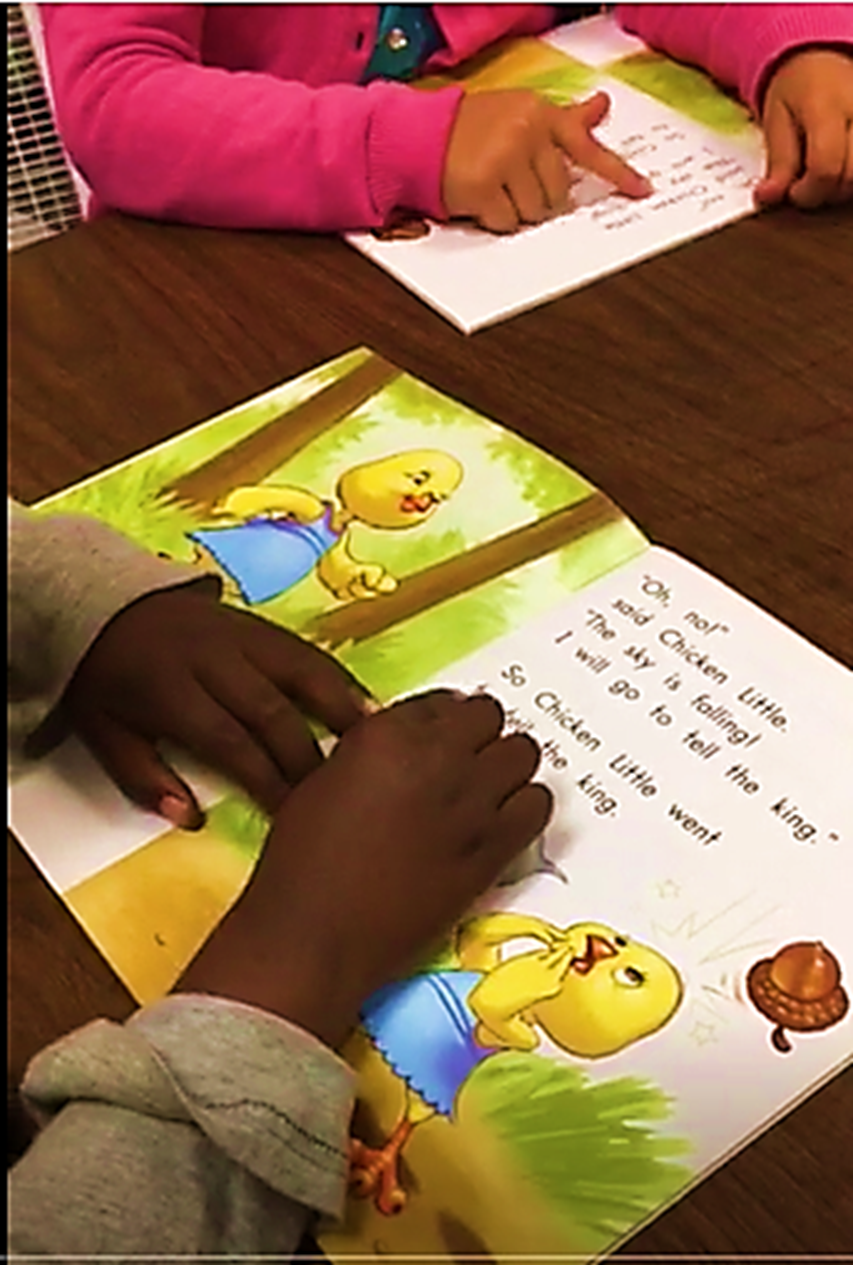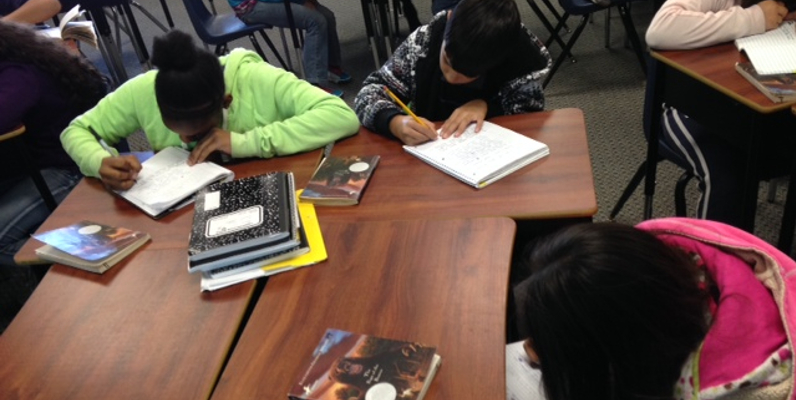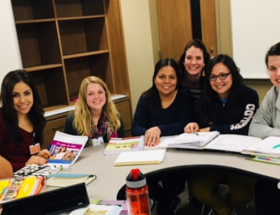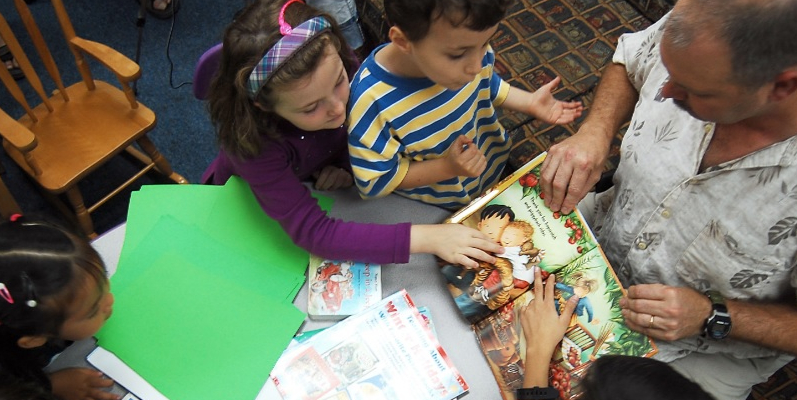I’ve lost count of the times teachers are asked about the fidelity of guided reading in their classrooms during a data meeting when students’ achievement (or the lack of) is being discussed.
There are other components of a balanced approach to language arts instruction and I’m confused as to why they are so easily forgotten.
A balanced approach to literacy, according to Spiegel (1998), is a decision-making approach through which teachers make thoughtful and purposeful decisions about how to help students become better readers and writers. A balanced approach “is built on research, views the teacher as an informed decision maker who develops a flexible program, and is constructed around a comprehensive view of literacy”
There are a variety of balanced literacy programs, but they typically include these characteristics:
- Literacy is viewed comprehensively, as involving both reading and writing.
- Literature is at the heart of the program.
- Skills and strategies are taught both directly and indirectly.
- Reading instruction involves learning word recognition and identification, fluency, vocabulary, and comprehension.
- Writing instruction involves learning to express meaningful ideas and use conventional spelling, grammar, and punctuation to express those ideas.
- Students use reading and writing as tools for learning in the content areas.
- The goal is to develop lifelong readers and writers. (Baumann & Ivey, 1997; McIntyre & Pressley, 1996; Spiegel, 1998; Weaver, 1998)
What is a Balanced Literacy Approach?
Fountas and Pinnell have long maintained that a balanced approach to literacy instruction includes:
Interactive Read Aloud–research has shown that an effective read aloud is one where students are actively involved in thinking, reflecting, asking and answering questions, making predication, all this instead of simply listening passively.
Shared Reading–an interactive reading event that occurs when students listen to a seasoned reader read text with fluency, accuracy and expression. Students can join in on the reading of a big book, poem or text that has been enlarged. The teacher guides and supports young readers in reading and comprehending the text.
Phonics, Spelling and Word Study–systematic instruction in how readers navigate oral and written language. This study contains explicit instruction in both whole-group instruction and small-group structures; all this to ensure that student identify, learn about, and practically use letters and sounds to form words.
Reading Mini-lessons–brief, concise, explicit lessons focused on principles that students apply to their own independent reading. Aligned with the interactive read-aloud, it is designed to be a bridge to independent reading.
Guided Reading–targeted instruction provided in small group format where students’ skills for processing increasingly challenging texts are supported through the teaching of specific behaviors in texts leveled on a gradient of difficulty.
Book Clubs–“provide an authentic opportunity for children to apply many of the literacy behaviors and understandings that they have learned through other instructional contexts: thinking within, beyond, and about a text; listening and understanding; interacting socially; engaging in extended discussions; and more. As they bring together much of their learning in this one context, children find a sense of agency. The experience of exchanging ideas with their peers and co-constructing richer understandings of texts is genuinely rewarding.” (Fountas and Pinnell)
Independent Reading–a daily literacy event that offers students opportunity to read texts they have chosen.

Why Are We Even Having This Discussion?
Each and every one of these components of a literacy approach should be considered as having equal value when it comes to the development of proficient readers. Guided Reading does not get to be the premier event when thinking about how kids learn to grow as readers.
When planning, teachers can strategically design instruction, modeling and practice for students in each of the components listed above. For instance, when thinking about the practice readers need in applying knowledge of letters and sounds, it makes sense that the instruction and application would take place during the phonics, word study and spelling portion of the language arts block. But, in fact, it would also make sense to include quick instruction and group application in a day’s lesson included during shared reading.
In addition, emerging patterns observed in benchmark assessment and progress monitoring are not only reserved for instruction during guided reading. Teachers can strategically plan to include modeling of the observed gaps during an interactive read aloud or the reading mini-lesson. You can see that readers’ needs can be addressed through instruction and modeling in any or all of the components of a balanced literacy approach.
I have nothing against guided reading. I just happen to think that there’s an over-emphasis on the attention it receives when teachers, coaches, administrators sit down to talk about ways to improve reading achievement. Guided reading cannot be the only answer when teachers look to remedy gaps for their students.
Can we allow all components of a balanced literacy approach to get top billing when we plan instructionally?
It’s certainly worth serious consideration.











Such a valuable question!!!
Shared reading often seems to get the shortest usage and it’s the one that has so many possibilities across content areas and grade ranges! I love guided reading but I believe that it becomes a “dependency” issue at many points with little to no student independence or transfer as instructional goals. That seems to lower the expectations as well as the benefits! Happy New Year!
Fran, I absolutely agree with you about shared reading. I do not understand why a lot of teachers have not yet discovered the power of SR. So many great excerpts can be used to share new strategies, skills, dispositions. You get so much bang for your buck with SR. I sure preach it a lot.